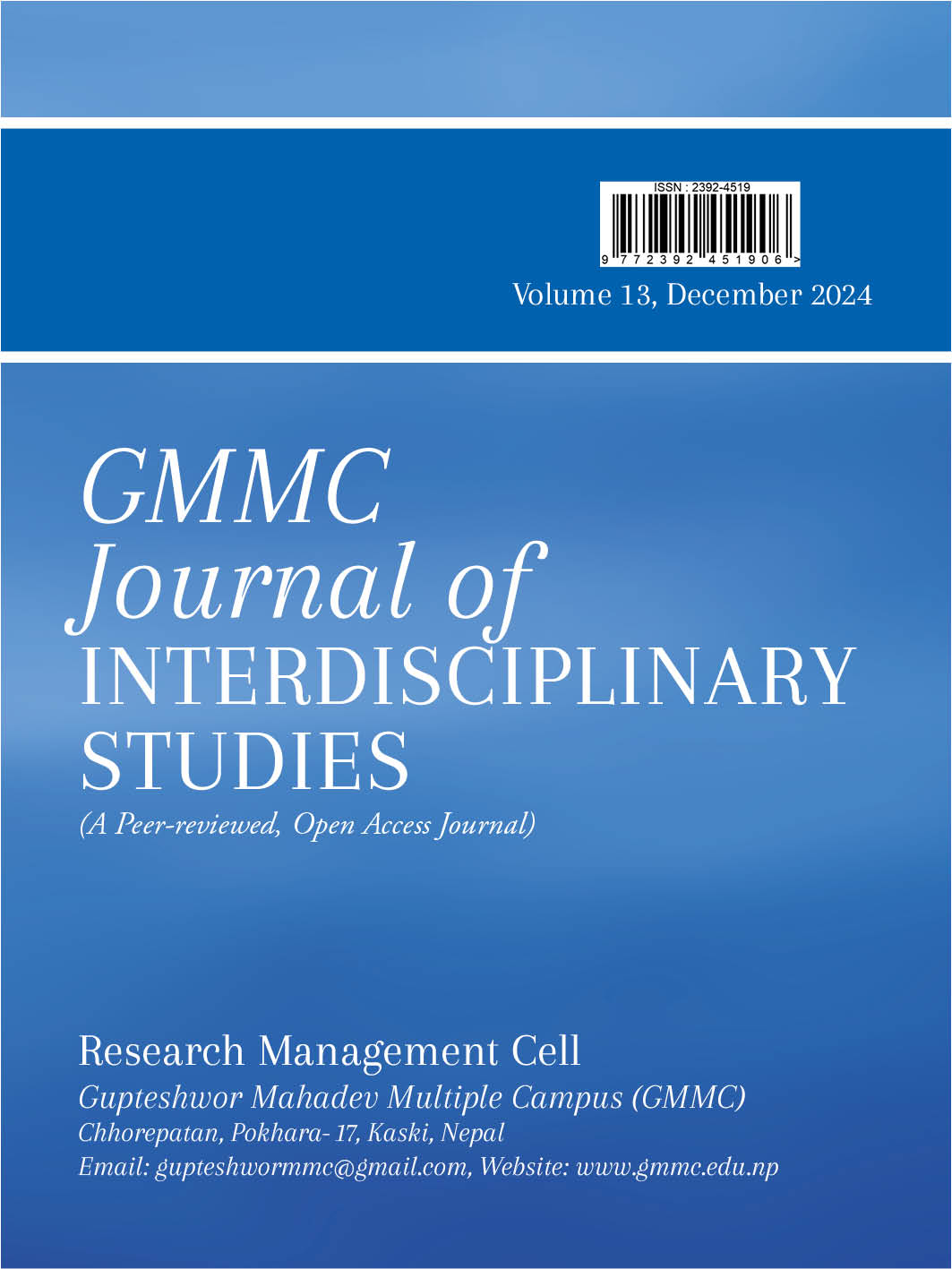Monetary Indicator and Economic Growth of SAARC Countries
DOI:
https://doi.org/10.3126/Keywords:
Economic Growth, monetary indicators, panel data, POLSAbstract
Monetary indicators are the inflation rate, exchange rate, broad money supply, interest rate and so on. This study aims to investigate the association and effect of monetary indicators on economic growth of SAARC nations. The foreign direct investment is taken as a control variable. There are used descriptive and casual research designs. The investigation is based on panel data over 23-years period from 2000 to 2022 of selected seven SAARC nations: Nepal, India, Pakistan, Bangladesh, Bhutan, Maldives, and Sri-Lanka. The research used POLS model for data analysis. The study concludes that there is a positive association between monetary indicators (i.e. rate of interest) and economic growth rate whereas a negative association between broad money supply, inflation rate, exchange rate, and economic growth rate. Similarly, the positive effect of interest rate on the economic growth rate but the exchange rate and inflation rate negatively affect economic growth rate. Among the variables exchange rate is the most influencing variable, therefore the SAARC nations should consider maintaining stability of the exchange rate. Despite the remarkable progress monetary indicators have achieved over the years, they are mostly ineffective in achieving their policy objectives because of shortcomings in the tools at their disposal and monetary indicators considerably influence on the economic growth of selected SAARC nations. Consequently, the policy makers and regulators consider monetary policy variables to enhance economic growth in selected South Asian countries.
Downloads
Published
Issue
Section
License

This work is licensed under a Creative Commons Attribution-NonCommercial 4.0 International License.





